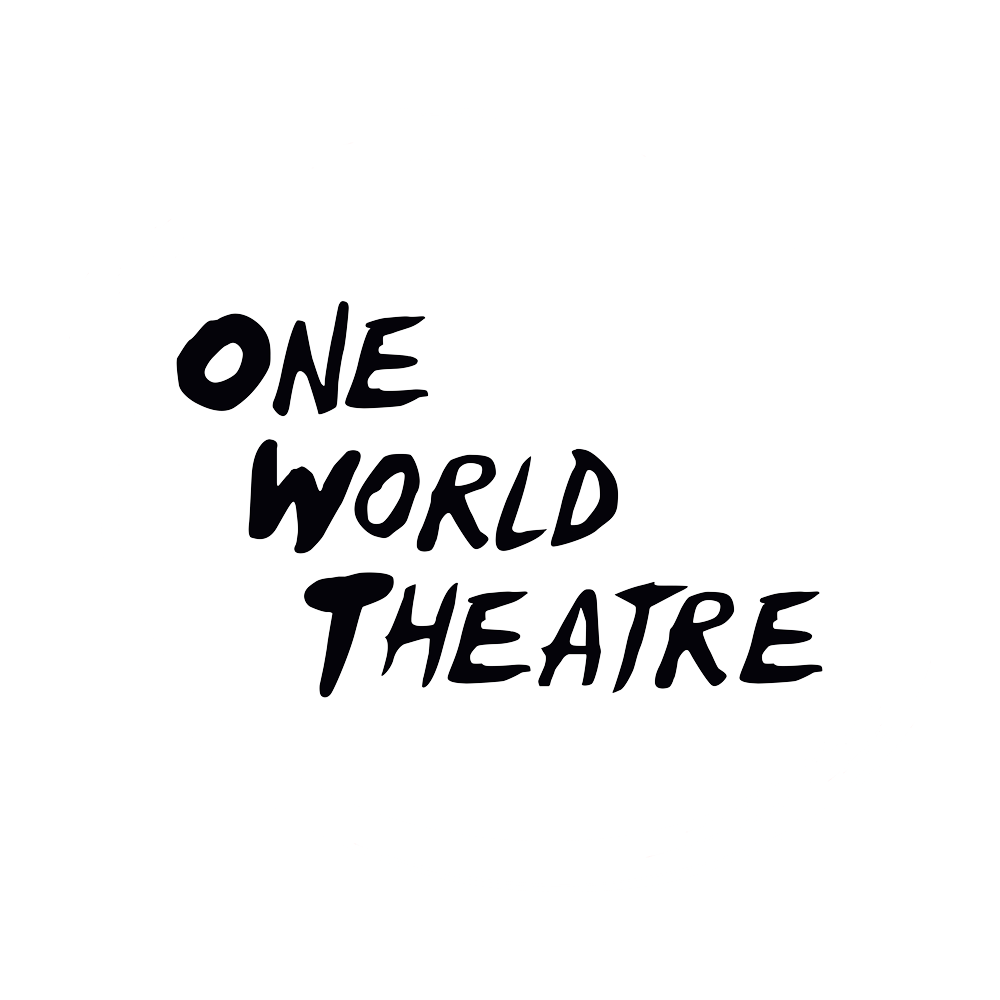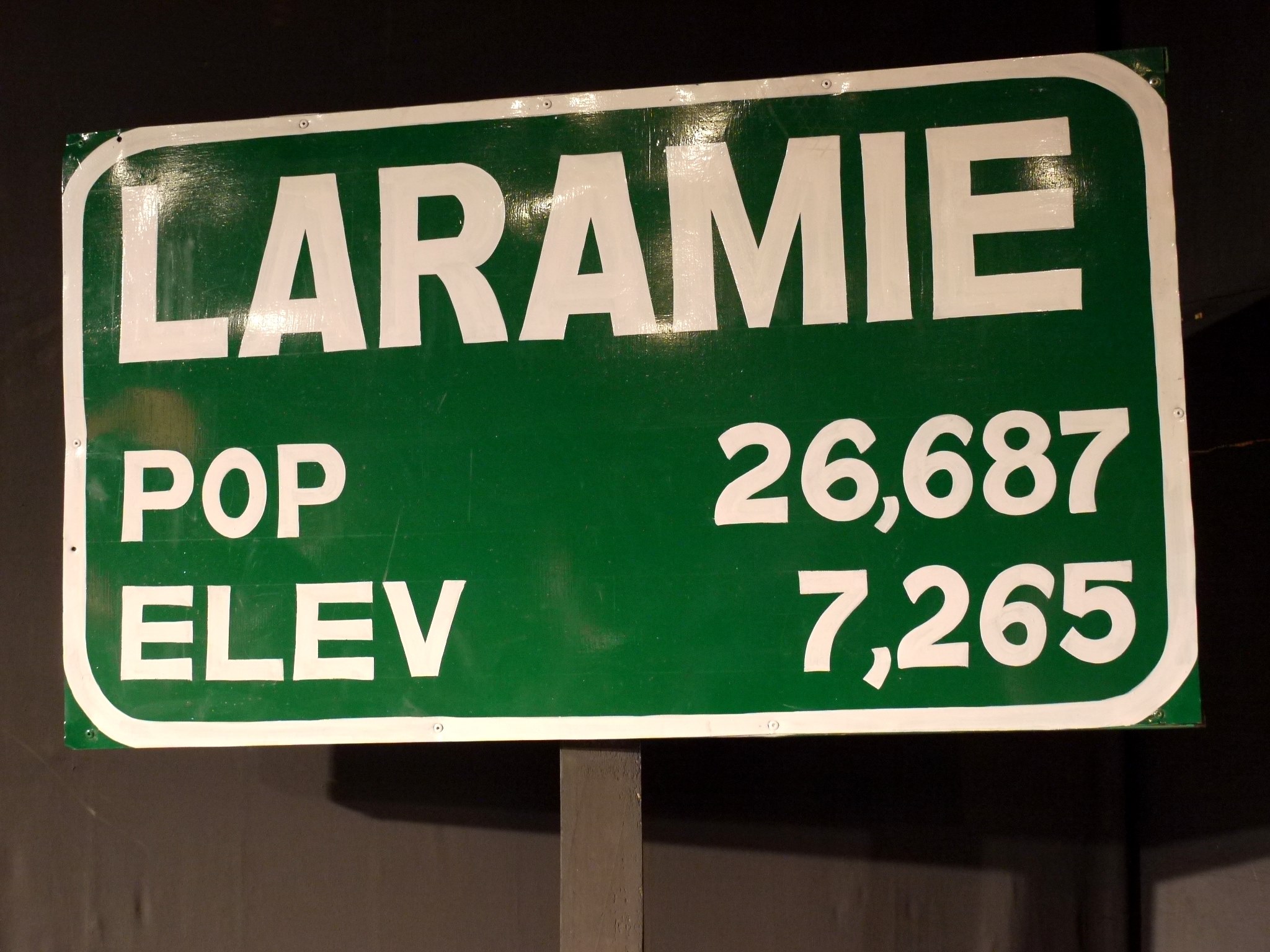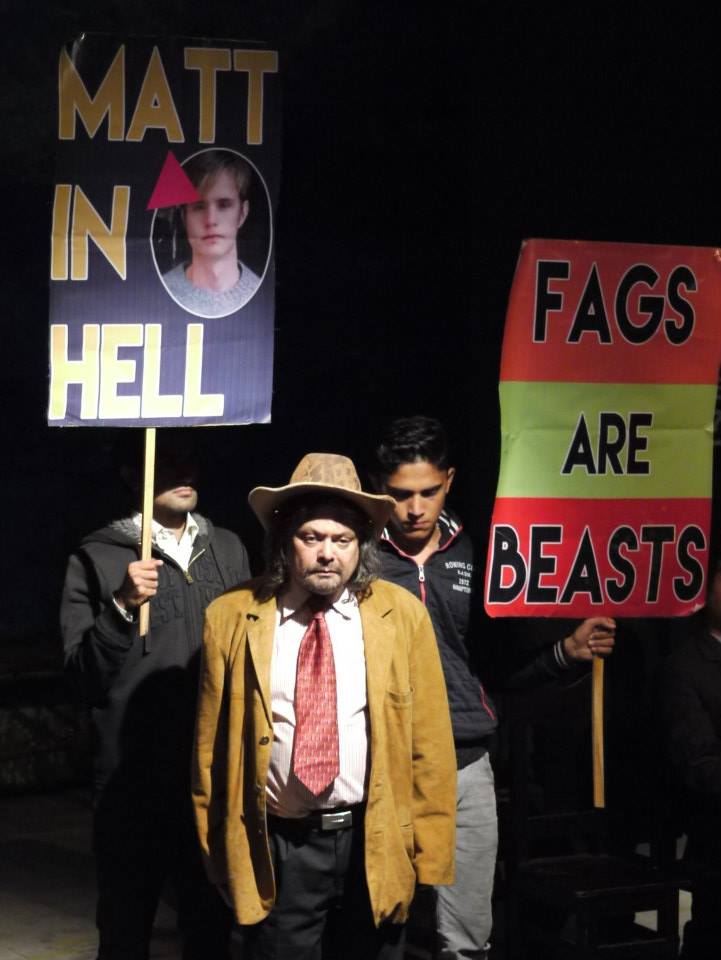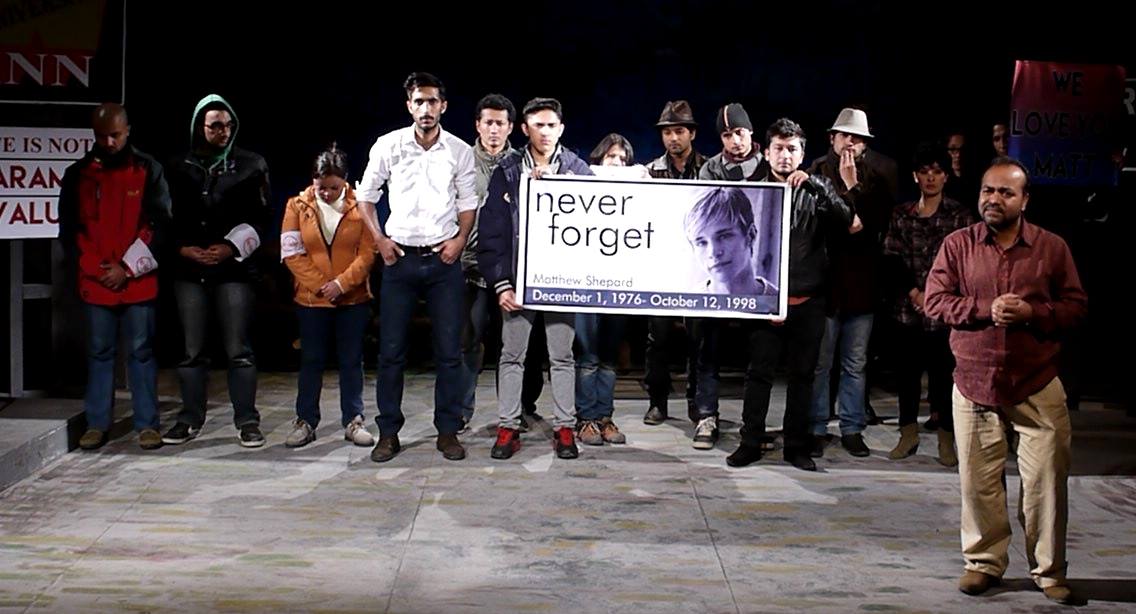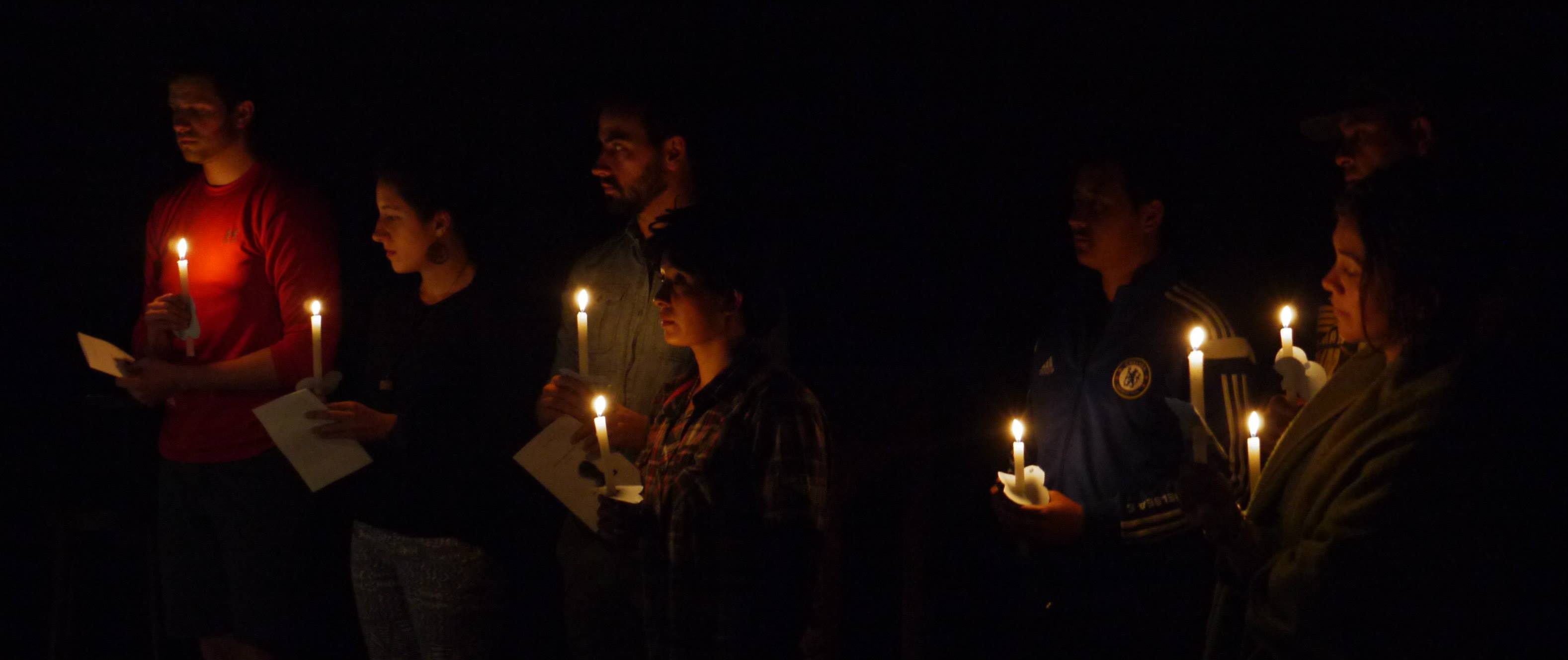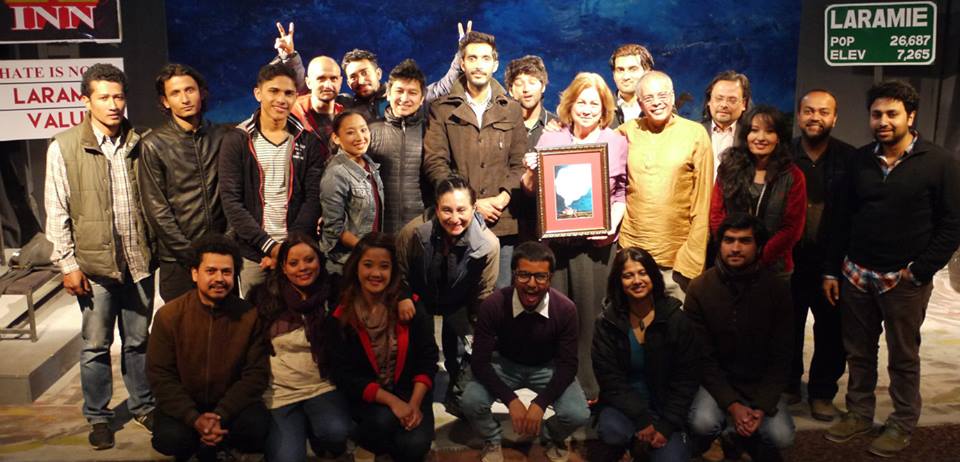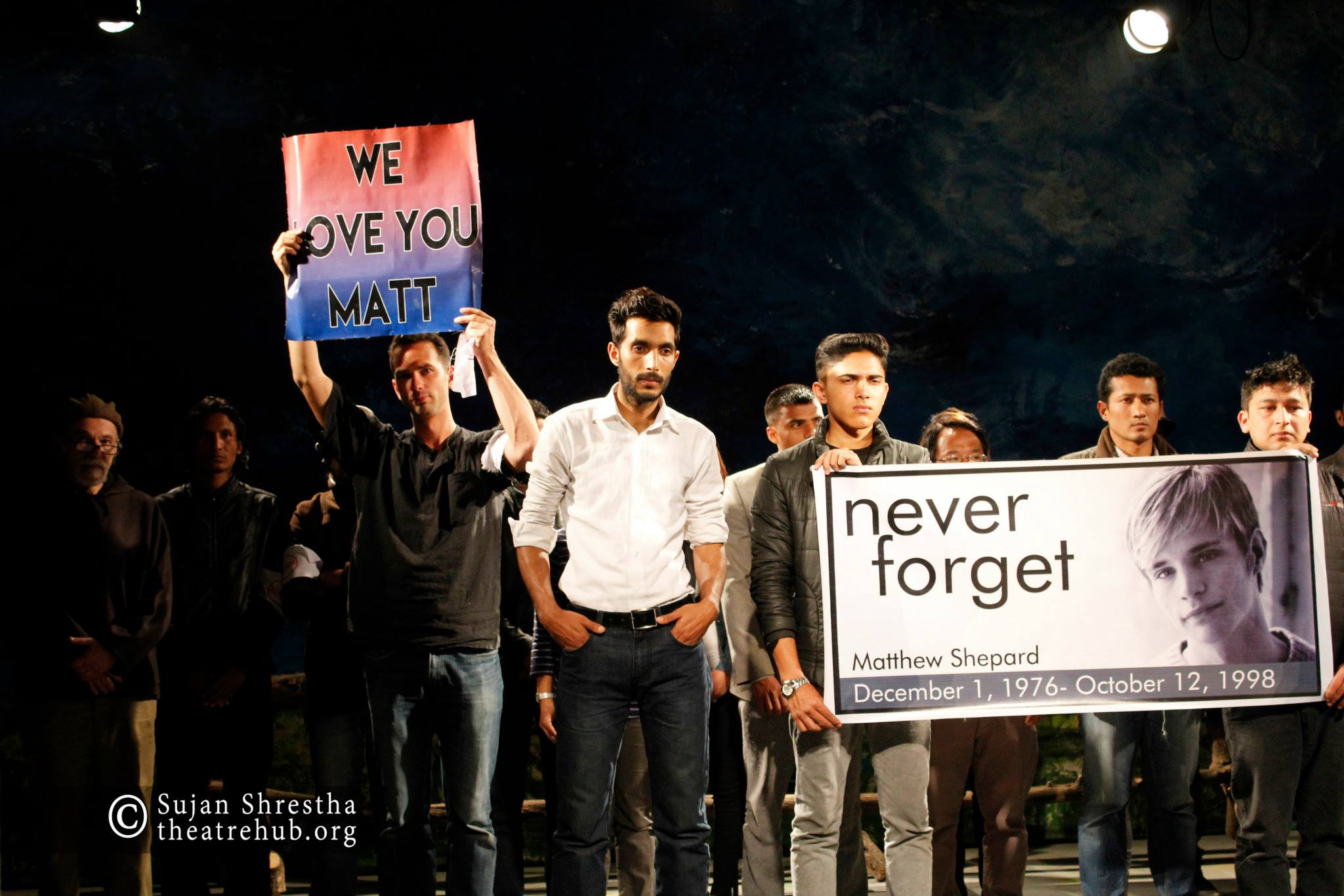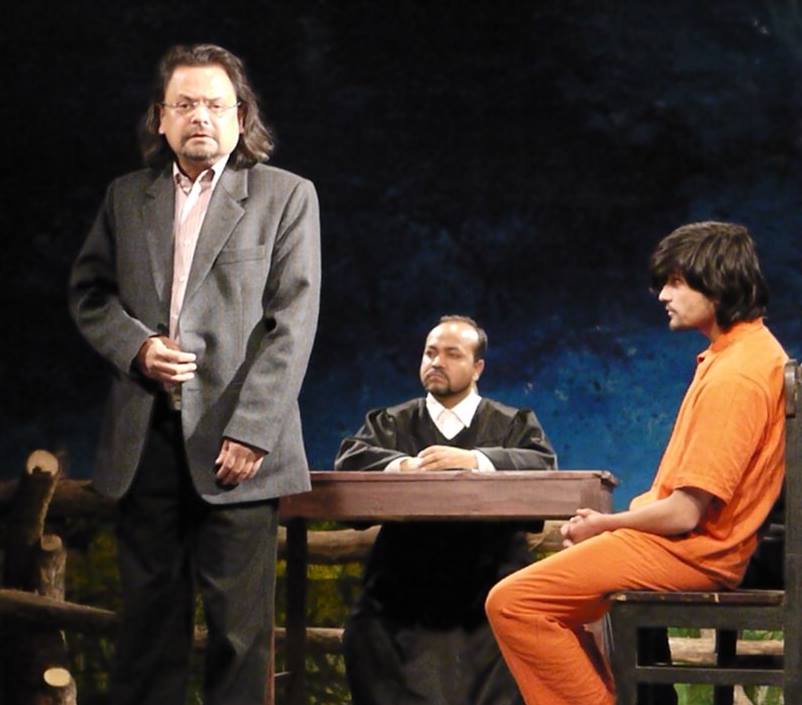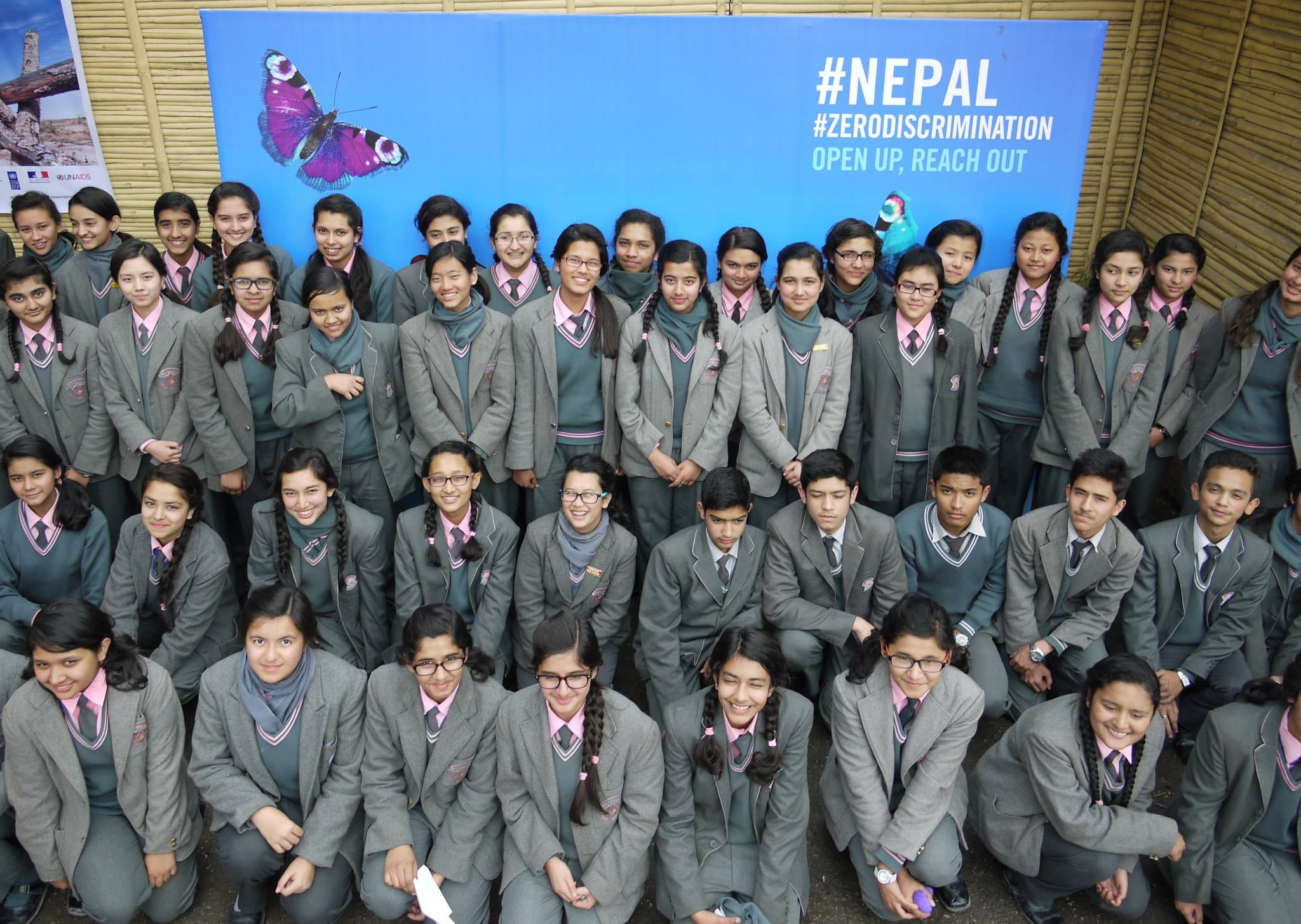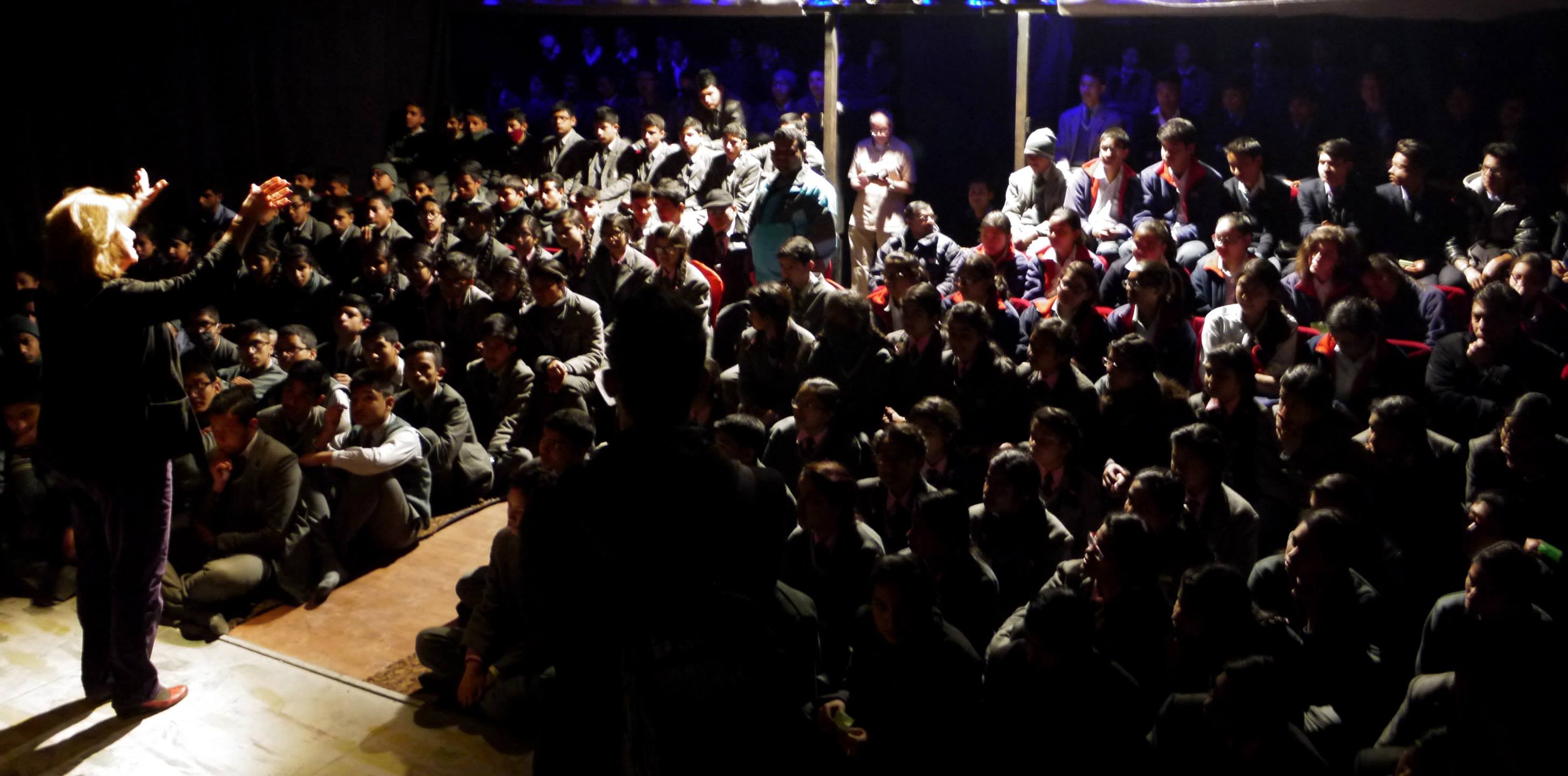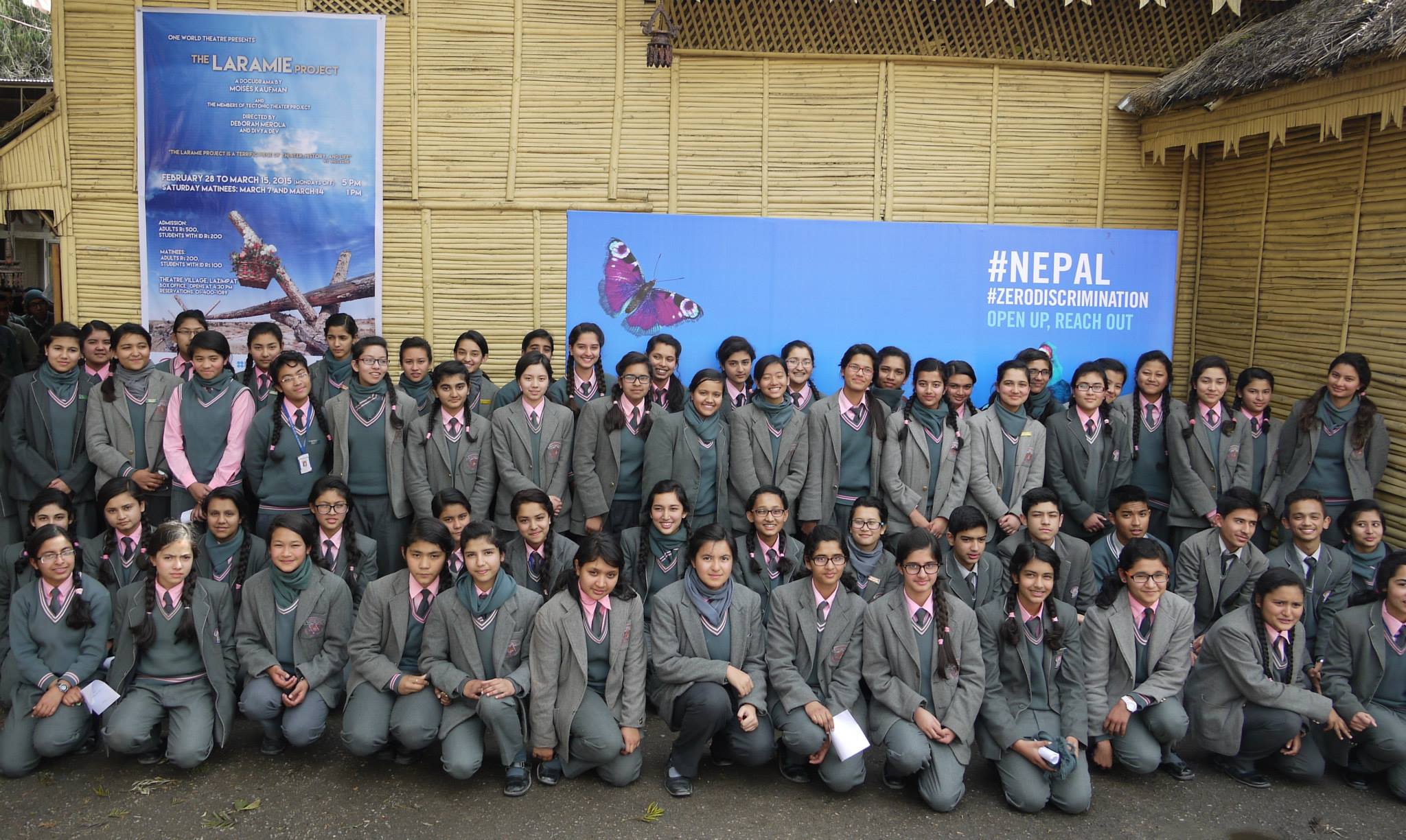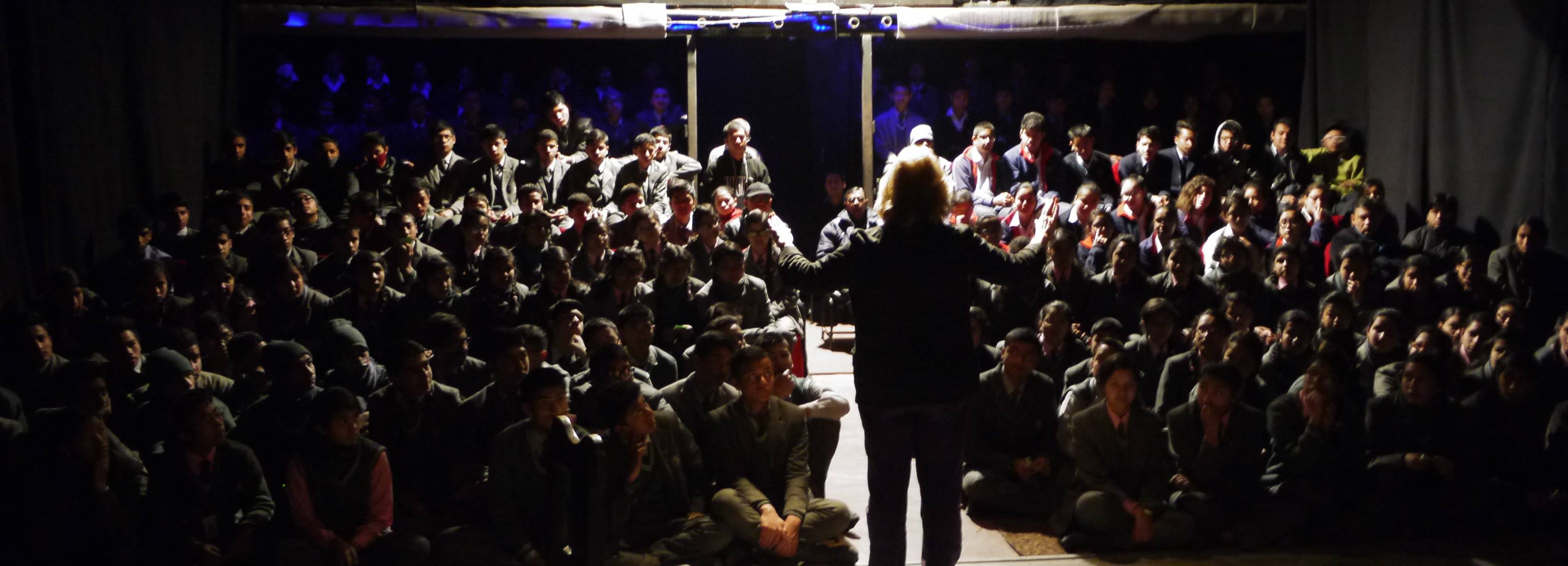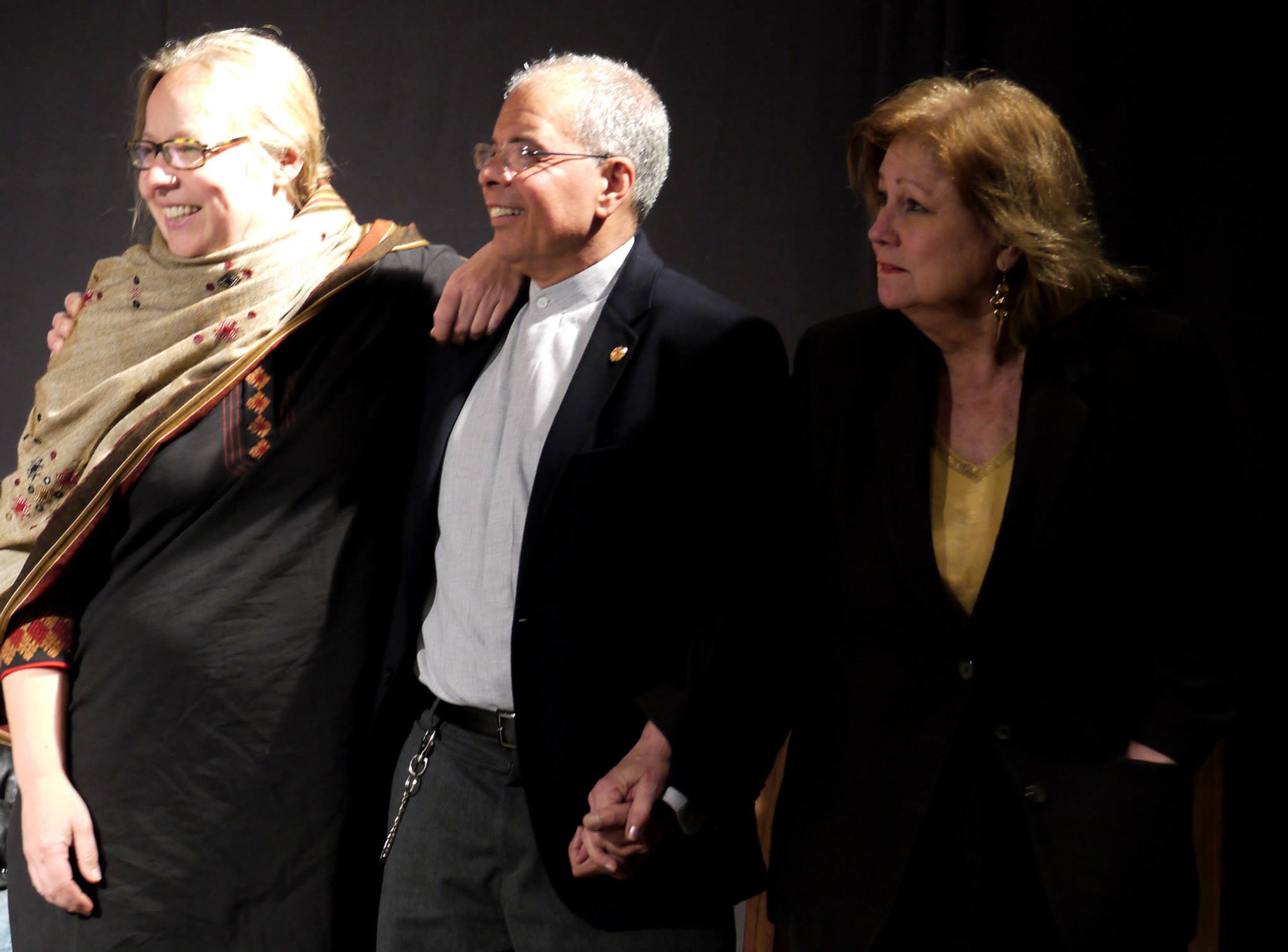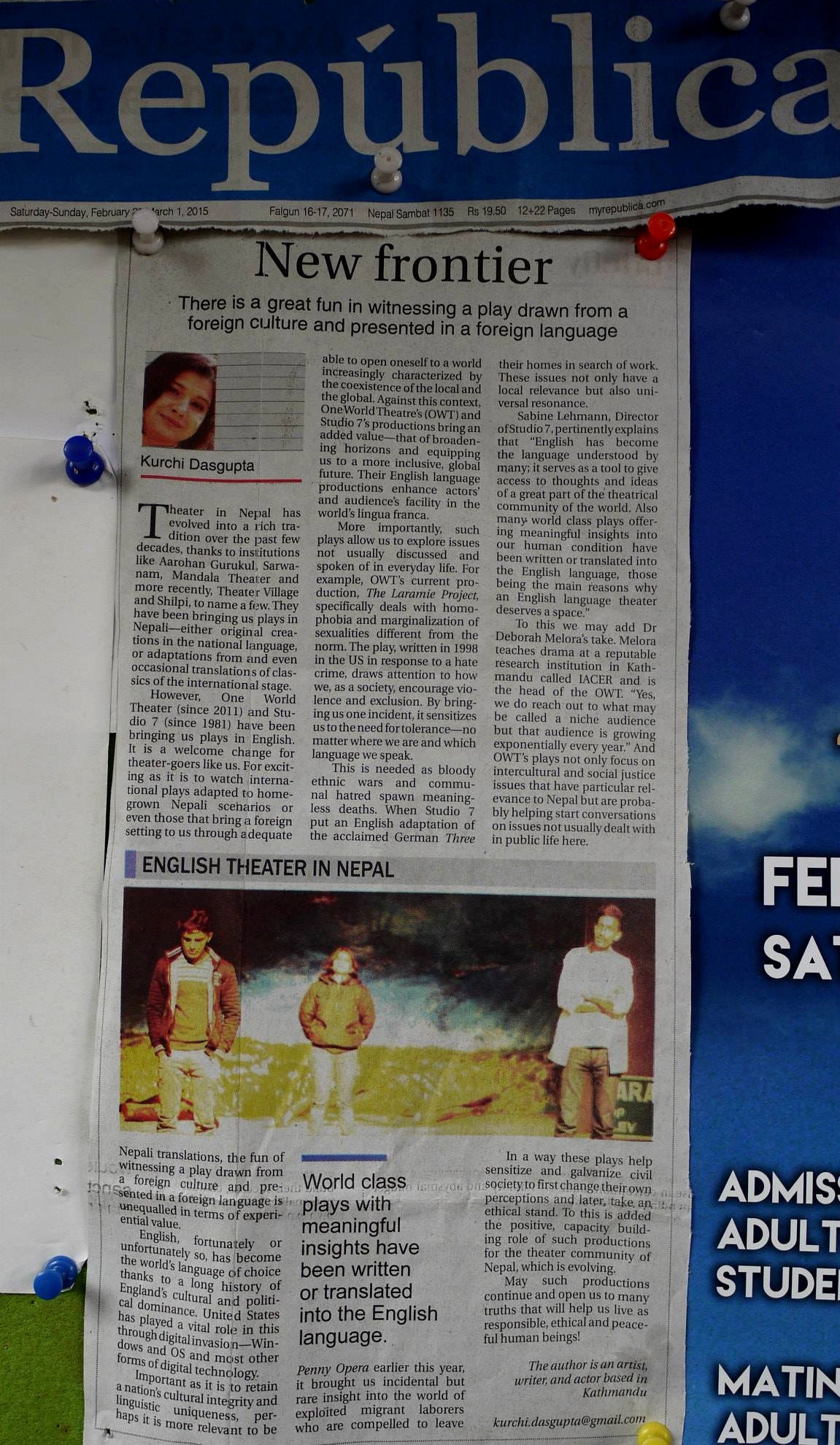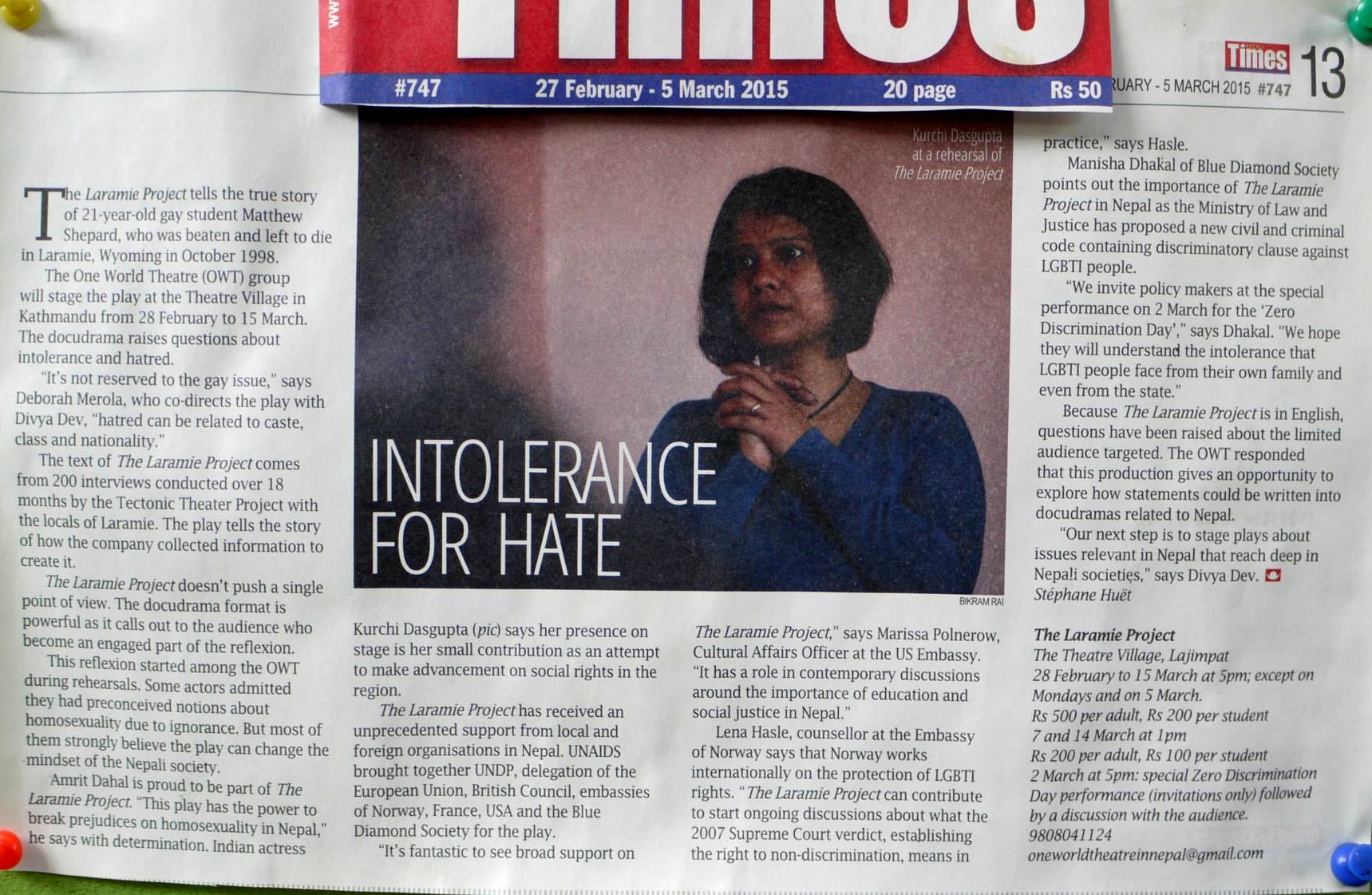The Laramie Project
A play by Moises Kaufman and Members of Tectonic Theatre Company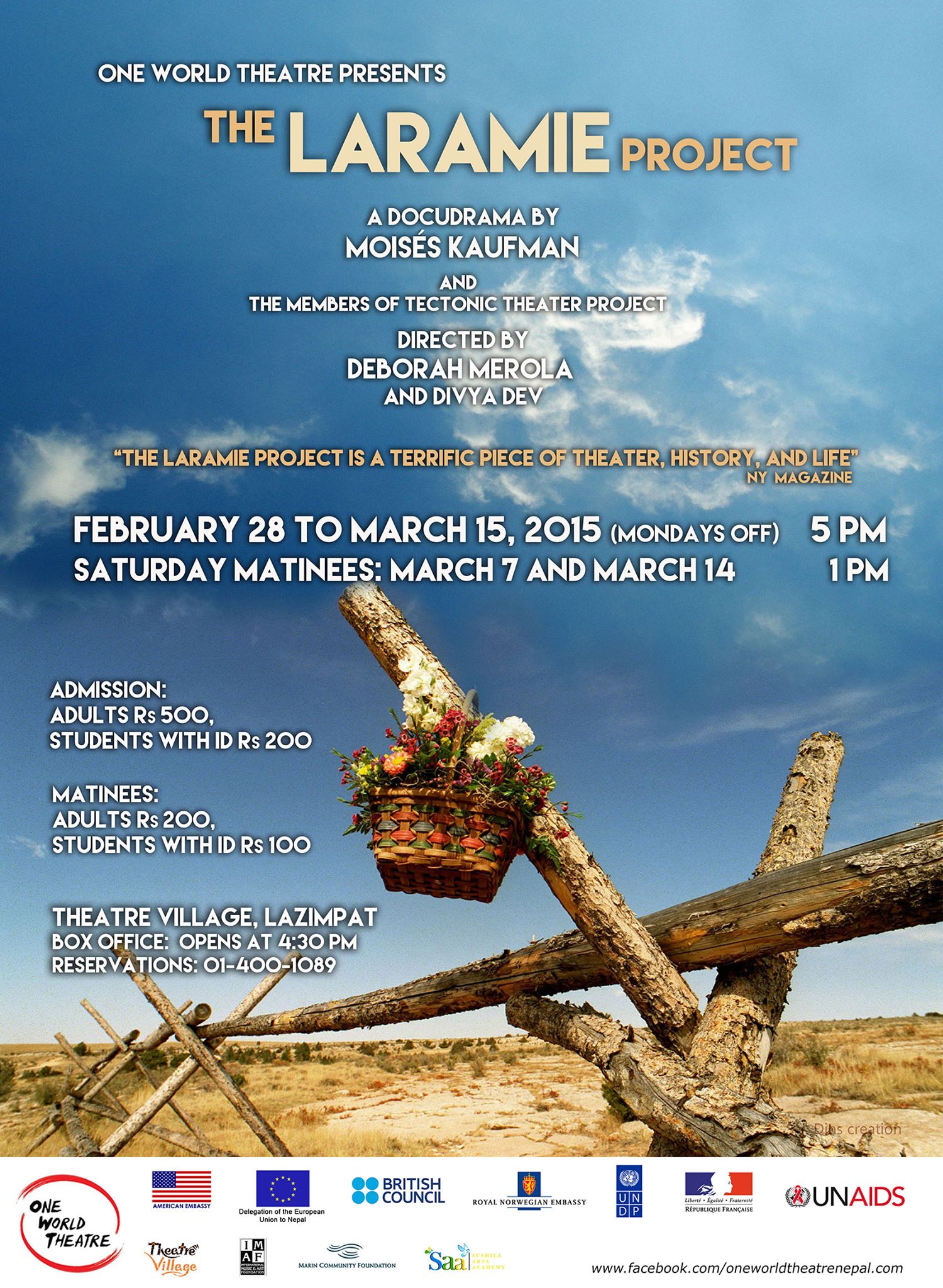
A production that garnered widespread media attention and support from the LGBTQI community, foreign Embassies UNAIDS, and other iNGO’s. This iconic docudrama tells the true story of Mathew Shepard, a young man, who on October 7, 1998 was savagely beaten and left to die on a fence in Laramie, Wyoming, USA. The murder was considered a hatecrime because Matthew Shepard was gay. The event received worldwide attention and raised questions about tolerance and hate.
Originally written and produced by members of the New York City based Tectonic Theater Company, whose cast members traveled to Laramie a month after the crime, conducted interviews and subsequently made six trips during the course of the year, The Laramie Project is an American theater played out in three acts. Due to its educational value and social messages, The Laramie Project has been reproduced numerous times in American schools and colleges.
The One World Theatre (OWT) production in Nepal premiered at Theatre Village, Lazimpat on February 28, 2015 and ran until March 15, 2015 with an all Nepali cast (with a couple of exceptions) of 24 actors who played 55 selected roles. It gathered a total audience of between 2,000 and 2,500 people during 19 performances, mostly young people, with a gala reception and premiere, two public and two special school matinees next to the regular performances.
An educational program ran concurrently with the play. The goals of the program were to reach out to high school and college students, bring them to the matinees and discuss the issues raised by the play.
This has been a moving journey for One World theatre artists and a big step forward for One World Theatre in terms of media interest and coverage, school outreach and response, LGBT attendance and participation, and new audiences for English language, social justice theatre.
Press coverage
Past the usual production reviews, at least ten press articles seriously considered the issues of homophobia and other forms of exclusion and how to teach tolerance, furthering a dialogue already begun in audience talk backs and comments.
Educational outreach
Olin Thakur, the consultant from UNESCO, offered help with contacting several A-level schools and universities to fill the special school matinees. Niranjan Kunwar, supported by UNAIDS and joined by volunteer cast member Sumnima Sampang, did an outstanding job conducting pre-and post-show dialogues with around 300 students for the two packed student matinees. The students’ enthusiastic response to the play and their thoughtful letters were touching and eagerly read by the cast, who are coming to understand better their potential role as social justice theatre workers. One ninth grader wrote, “From this play, I learned that being different is not a crime.” Another commented, “I think that gays should not be criticized or be bullied, but instead we should encourage them and support them….After seeing this show, my view of gay people is fully changed [in a positive way].”
Reaching out to LGBTIQ community
Efforts were also made to involve and attract members of the LGBTIQ community, which rarely has opportunities to discuss many of the issues raised by the play. The Special House on Monday 2 March 2015, to commemorate World Zero Discrimination Day, hosted by UNAIDS, the Norwegian Embassy, and the Blue Diamond Society brought together a diverse group of LGBT community members, activists, rights advocates, and others engaged in gay rights and HIV issues. Besides the involvement of Blue Diamond Society, 420 messages regarding the play were send out through apps (420 though Planet Romeo, 54 through Grindr). It received nearly a hundred replies, with around 30 replies saying they had already seen the play and all were very positive. 65 promised to come before the end of the show. One said: “Thank u. tears rolls down 4 time.” Another wrote: “I already went and really luved it. I ask my brother to go so I can talk to him about what it means to be gay....”.
Getting replies from 1 out of 5 messages is an amazing reply average (in only 36h after sending), so it does seem to speak to them. It has been quite interesting to have seen openly gay people in the audience, and also outside of the BDS performance. A male-male couple even exchanged a kiss in the audience at the moment of the homecoming parade.
Audience involvement
Efforts were made to have the audience participate in an active way. Every performance ended with a discussion and open questions, which sparked very interesting points of view on the realities of LGBTIQ people in Nepal, and how similar harassment and hate crimes are committed here. One transgender audience member explained how she had been brutally beaten.
Also during the play, members from the audience were invited to partake in key moments, as for instance jury members during the trial of one of the perpetrators, holding a candle during a vigil and walking in a parade which honored Matthew Sheppard. These are all ways in which the audience becomes more involved and actively partake in the play.
INSTUTIONS SUPPORTING
The Laramie Project production by One World Theater would not have happened without the early support of the Marin Community Foundation in California, USA; the International Music and Art Foundation in Macedonia; and Public and Cultural Affairs of the US Embassy in Kathmandu, Nepal. Dr. Ruben del Prado, the UNAIDS Country Director for Nepal and Bhutan, a new friend, has been absolutely instrumental in bringing together UNDP, UNFPA and UNESCO; the British Council; the European Union; and the American, Australian, French, and Norwegian Embassies. Thank you Ruben and everyone!
Thank you for your special presence and support at the Cocktail Reception and Preview of The Laramie Project, hosted by UNAIDS, which raised $1,400 toward the Theatre Village rental. Special thanks, too, to Giuseppe Savino, a positive role model to the hard working young volunteers from YUWA and the US Embassy’s Youth Council, who helped clean up the outside premises at Theatre Village. The Hyatt Regency Kathmandu kindly supplied the delicious hot canapés and the French Embassy donated 24 bottles of wine for the Reception.
In 2017, OWT also performed the follow-up play, The Laramie Project: Ten years later, produced by the same Tectonic theatre company but revisiting Laramie ten years later, and adding stories of Nepali LGBTIQ people.
CHARACTERS (In Order of Speaking Appearance plus Ensemble Roles)
DIVYA DEV
Narrator:
Stephen Belber; Member of Tectonic Theater Project
Jonas Slonaker; Gay man, in his forties
Matt Galloway; Bartender at the Fireside, in his twenties; student at the University of Wyoming
Dr. Cantway; Emergency room doctor at Ivinson Memorial Hospital in Laramie, in his fifties
Andrew Gomez; Latino form Laramie, in his twenties
SULAKCHHYAN BHARATI
Greg Pierotti; Member of Tectonic Theater Project
Baptist Minister; Originally from Texas, in his fifties
Roulon Stacey; CEO Poudre Valley Hospital in Fort Collins, Colorado, in his forties; a Mormon
BIKRAM PARIYAR
Sergeant Hing; Detective at the Laramie Police Department, in his forties
Judge;
Conrad Miller; Car mechanic, in his thirties
Harry Woods; Gay Laramie resident, fifty-two years old
KURCHI DASGUPTA
Rebecca Hilliker; Head of the theater department at the University of Wyoming, in her forties; Midwestern accent
Waitress; Debbie Reynolds in her forties
Trish Steger; Romaine Patterson’s sister, in her forties; owner of a shop in town.
Reggie Flutty; The policewoman who responded to the 911 call and discovered Matthew at the fence, in her late thirties
LUPE GEISS
Eileen Engen; Rancher, in her fifties
Marge Murray; Reggie Fluty's mother, in his seventies; has emphysema but continues to smoke.
RAJKUMAR PUDASAINI
Doc O’Conner; Limousine driver and local entrepreneur, in his fifties
Moises Kaufman; Member of Tectonic Theater Project
Father Roger Schmit; Catholic priest, in his forties; very outspoken
Shadow; DJ at the Fireside; African American man, in his thirties
Murdock Cooper: Rancher, in his fifties; resident of Centennial, a nearby town
GOPAL ARYAL
Philip Dubois; President of the University of Wyoming, in his forties
Jon Peacock; Matthew Shepard’s academic advisor, in his thirties; political science professor
Stephen Mead Johnson; Unitarian minister, in his fifties
BINU LAMA
Zakie Salmon; Administrator at the University of Wyoming, in her forties; lesbian; Texas accent
Alison Mears; Volunteer for a social service agency in town, in her fifties; very good friend of Marge Murray
Ms. Thompson: Grandmother Of Russell Henderson, in her sixties; working-class woman who provided a popular daycare service for the town
UTPAL JHA
Jedadiah Schultz; University student, nineteen years old
Andy Paris; Member of Tectonic Theater Project
Matt Mickelson: Owner of the Fireside, in his thirties
AVASHREE GURUNG
Reporter;
Amanda Gronich; Member of Tectonic Theater Project
Newsperson 2:
Tiffany Edwards; Local reporter, in her twenties
Jury:
SUMNIMA SAMPANG
Leigh Fondakowski; Member of Tectonic Theater Project
Catherine Connolly; Out lesbian professor at the university, in her forties
SHANTI GIRI
Barbara Pitts; Member of Tectonic Theater Project
Romaine Patterson: Lesbian, twenty-one years old
Newsperson 3:
HEMANTA CHALISE
Doug Laws; Stake Ecclesiastical leader for the Mormon Church in Laramie, in his fifties
Newsperson:
Rob Debree;
RAJENDRA THAPA
Phil Labrie; Friend of Matthew Shepard, in his late twenties; eastern European accent
Jeffrey Lockwood: Laramie resident, in his forties
BIKASH SUWAL
Anonymous; Friend of Aaron McKinney, in his twenties; works for the railroad
Newsperson 4:
AMRIT DAHAL
Aaron Kreifals; University student, 19 years old
SAMEER ADHIKARI
E-mail Writer:
Foreperson:
MAHESH TRIPATHI
Kerry Drake: Reporter with the Casper Star-Tribune, in his forties
Aaron McKinney: One of the perpetrators, twenty-one years old
SAJAG RANA
Reverend Fred Phelps: Minister from Kansas, in his sixties
Dennis Shepard: Father of Matthew Shepard, in his forties; Wyoming native
NIMESH SHRESTHA
Russell Henderson: One of the perpetrators, twenty-one years old
